
伤口世界
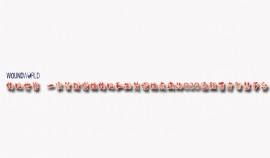
- 星期一, 10 4月 2023
中西医结合防治糖尿病足中国专家共识( 精简版)
【执行编委导读】肢体血管疾病相关性慢创,临床表现为肢体的慢性难愈性溃疡,但本质上与周围血管疾病密切相关, 其典型病种包括糖尿病足溃疡( 脱疽) 、下肢静脉性溃疡( 臁疮) 等。该类疾病发病率高,发达国家 60% 的新发肢体溃疡与周围 动脉病变有关,我国糖尿病患者 1 年内新发足溃疡率高达 8. 1% ; 疾病后果严重,仅以糖尿病足为例,总截肢率为 19. 03% , 而截肢患者的 1 年生存率甚至比大多数恶性肿瘤患者更低。该类疾病的诊疗过程,需要多学科团队合作才能完成,具体体现为: 血管外科技术与创面修复技术的合作,西医手术与中医外治法的合作等,该病的诊疗是临床研究的热点和难点问题。本期专题,发布了 《中西医结合防治糖尿病足中国专家共识( 精简版) 》( 以下简称 《共识》) ,《共识》由中国中西医结合学会周围血管病专业委员会牵头,组织国内 40 余名相关学科的一线专家执笔,历经 10 余轮讨论,耗时 3 年完成,包括定义、伴随疾患、分级分型、筛查预防、治疗五大板块。《共识》的制定,体现了中西医结合理念,重视学科的开放性和全面性、内容的权威性、临床参考的实用性、糖尿病足的预防和营养支持,以及疾病的整体观。同时,专题还邀请了黑龙江中医药大学附属第一医院李令根团队、北京中医药大学东直门医院杨博华 - 鞠上团队、洛阳市中医院何春红团队、北京市宣武中医医院郭娴团队等中西医结合周围血管病领域的知名专家,从名老中医经验传承及中医外治法创新等层面撰稿,展示中西医结合防治肢体血管疾病相关性慢创的优势。期待通过本专题的举办,进一步促进中西医结合治疗肢体血管疾病相关性慢创的研究,规范和拓展中西医结合诊疗技术在该病种防治过程中的应用。
( 北京中医药大学东直门医院 杨博华、鞠上) (中国中西医结合学会周围血管病专业委员会)
通信作者: 杨博华,E-mail: yangb5191@ sina. com; 鞠上,E-mail: juuncle@ 163. com
【关键词】糖尿病足; 中西医结合; 专家共识 DOI: 10. 16025 /j. 1674-1307. 2019. 11. 007
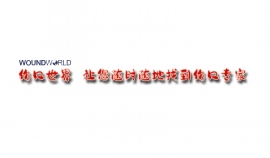
- 星期五, 07 4月 2023
Skeletal muscle and intermuscular adipose tissue gene expression profiling identifies new biomarkers with prognostic significance for insulin resistance progression and intervention response
Dominik Lutter1,2 ● Stephan Sachs3 ● Marc Walter2,3 ● Anna Kerege4 ● Leigh Perreault 4 ● Darcy E. Kahn4 ● Amare D. Wolide1,2,5 ● Maximilian Kleinert 2,6,7 ● Bryan C. Bergman4 ● Susanna M. Hofmann2,3,8
Received: 15 July 2022 /Accepted: 6 December 2022 / Published online: 15 February 2023 © The Author(s) 2023
Abstract Aims/hypothesis Although insulin resistance often leads to type 2 diabetes mellitus, its early stages are often unrecognised, thus reducing the probability of successful prevention and intervention. Moreover, treatment efficacy is affected by the genetics of the individual. We used gene expression profiles from a cross-sectional study to identify potential candidate genes for the prediction of diabetes risk and intervention response.
Methods Using a multivariate regression model, we linked gene expression profiles of human skeletal muscle and intermuscular adipose tissue (IMAT) to fasting glucose levels and glucose infusion rate. Based on the expression patterns of the top predictive genes, we characterised and compared individual gene expression with clinical classifications using k-nearest neighbour clustering. The predictive potential of the candidate genes identified was validated using muscle gene expression data from a longitudinal intervention study.
Results We found that genes with a strong association with clinical measures clustered into three distinct expression patterns. Their predictive values for insulin resistance varied substantially between skeletal muscle and IMAT. Moreover, we discovered that individual gene expression-based classifications may differ from classifications based predominantly on clinical variables, indicating that participant stratification may be imprecise if only clinical variables are used for classification. Of the 15 top candidate genes, ST3GAL2, AASS, ARF1 and the transcription factor SIN3A are novel candidates for predicting a refined diabetes risk and intervention response.
Conclusion/interpretation Our results confirm that disease progression and successful intervention depend on individual gene expression states. We anticipate that our findings may lead to a better understanding and prediction of individual diabetes risk and may help to develop individualised intervention strategies.
Keywords Computational health . Diabetes subtypes . Glucose intolerance . Insulin resistance . Intermuscular adipose tissue . Obesity . Personalised medicine . Response to treatment prediction . Type 2 diabetes
Dominik Lutter 该Email地址已收到反垃圾邮件插件保护。要显示它您需要在浏览器中启用JavaScript。
* Susanna M. Hofmann 该Email地址已收到反垃圾邮件插件保护。要显示它您需要在浏览器中启用JavaScript。
1 Computational Discovery Research, Institute for Diabetes and Obesity (IDO), Helmholtz Diabetes Center (HDC), Helmholtz Zentrum München – German Research Center for Environmental Health, Neuherberg, Germany
2 German Center for Diabetes Research (DZD), Neuherberg, Germany
3 Institute for Diabetes and Regeneration (IDR-H), Helmholtz Zentrum München – German Research Center for Environmental Health, Neuherberg, Germany
4 University of Colorado Anschutz Medical Campus, Aurora, CO, USA
5 Division of Metabolic Diseases, Department of Medicine, Technische Universität München (TUM), Munich, Germany
6 Drug Development Unit, Institute for Diabetes and Obesity (IDO), Helmholtz Diabetes Center (HDC), Helmholtz Zentrum München – German Research Center for Environmental Health, Neuherberg, Germany
7 Group of Muscle Physiology and Metabolism, German Institute of Human Nutrition, Potsdam-Rehbruecke (DIfE), Nuthetal, Germany
8 Department of Medicine IV, University Hospital, LMU Munich, Munich, Germany

- 星期二, 04 4月 2023
Significant impact of time-of-day variation on metformin pharmacokinetics
Denise Türk1 iD Nina Scherer1 & Dominik Selzer1 & Christiane Dings1 & Nina Hanke1 & Robert Dallmann2 iD Matthias Schwab3,4,5 & Peter Timmins 6 iD Valerie Nock7 & Thorsten Lehr1 iD
Received: 22 November 2022 /Accepted: 31 January 2023 © The Author(s) 2023
Abstract
Aims/hypothesis The objective was to investigate if metformin pharmacokinetics is modulated by time-of-day in humans using empirical and mechanistic pharmacokinetic modelling techniques on a large clinical dataset. This study also aimed to generate and test hypotheses on the underlying mechanisms, including evidence for chronotype-dependent interindividual differences in metformin plasma and efficacy-related tissue concentrations.
Methods A large clinical dataset consisting of individual metformin plasma and urine measurements was analysed using a newly developed empirical pharmacokinetic model. Causes of daily variation of metformin pharmacokinetics and interindividual variability were further investigated by a literature-informed mechanistic modelling analysis.
Results A significant effect of time-of-day on metformin pharmacokinetics was found. Daily rhythms of gastrointestinal, hepatic and renal processes are described in the literature, possibly affecting drug pharmacokinetics. Observed metformin plasma levels were best described by a combination of a rhythm in GFR, renal plasma flow (RPF) and organic cation transporter (OCT) 2 activity. Furthermore, the large interindividual differences in measured metformin concentrations were best explained by individual chronotypes affecting metformin clearance, with impact on plasma and tissue concentrations that may have implications for metformin efficacy.
Conclusions/interpretation Metformin’s pharmacology significantly depends on time-of-day in humans, determined with the help of empirical and mechanistic pharmacokinetic modelling, and rhythmic GFR, RPF and OCT2 were found to govern intraday variation. Interindividual variation was found to be partly dependent on individual chronotype, suggesting diurnal preference as an interesting, but so-far underappreciated, topic with regard to future personalised chronomodulated therapy in people with type 2 diabetes.
Keywords Chronopharmacology . Empirical modelling . Mechanistic modelling . Metformin . Pharmacokinetics . Renal excretion . Transporter
Thorsten Lehr
该Email地址已收到反垃圾邮件插件保护。要显示它您需要在浏览器中启用JavaScript。
1 Clinical Pharmacy, Saarland University, Saarbrücken, Germany
2 Division of Biomedical Sciences, Warwick Medical School, University of Warwick, Coventry, UK
3 Dr. Margarete Fischer-Bosch-Institute of Clinical Pharmacology, Stuttgart, Germany
4 Departments of Clinical Pharmacology, Pharmacy and Biochemistry, University of Tübingen, Tübingen, Germany
5 Cluster of Excellence iFIT (EXC2180) ‘Image-guided and Functionally Instructed Tumor Therapies’, University of Tübingen, Tübingen, Germany
6 Department of Pharmacy, University of Huddersfield, Huddersfield, UK
7 Boehringer Ingelheim Pharma GmbH & Co. KG, Biberach, Germany
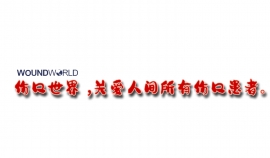
- 星期一, 03 4月 2023
Use of Medical-Grade Honey to Treat Clinically Infected Heel Pressure Ulcers in High-Risk Patients: A Prospective Case Series
Georgios E. Papanikolaou 1,*, Georgios Gousios 2 and Niels A. J. Cremers 3,4,*iD
1 GP Plastic Surgery Private Practice, P. Dagkli 1, 45444 Ioannina, Greece
2 PharmaLife, I. Vilara 40, 45444 Ioannina, Greece
3 Department of Gynecology and Obstetrics, Maastricht University Medical Centre, P. Debyelaan 25, 6229 HX Maastricht, The Netherlands
4 Triticum Exploitatie BV, Sleperweg 44, 6222 NK Maastricht, The Netherlands
*Correspondence: 该Email地址已收到反垃圾邮件插件保护。要显示它您需要在浏览器中启用JavaScript。 (G.E.P.); 该Email地址已收到反垃圾邮件插件保护。要显示它您需要在浏览器中启用JavaScript。 or 该Email地址已收到反垃圾邮件插件保护。要显示它您需要在浏览器中启用JavaScript。 (N.A.J.C.); Tel.: +30-2651-607063 (G.E.P.); +31-43-325-1773 (N.A.J.C.)
Abstract: Management of locally infected heel-pressure ulcers (HPUs) remains challenging, and given the increasing occurrence of infections resistant to antibiotic therapy and patients’ unwillingness to surgery, innovative and effective approaches must be considered. Medical-grade honey (MGH) could be an alternative therapeutic approach due to its broad-spectrum antimicrobial activity and healing properties. This study aimed to present the high effectiveness and safety of MGH for the conservative treatment of clinically infected HPUs. In this case series, we have prospectively studied nine patients with local signs of infected HPUs. In all cases, HPUs persisted for more than 4 weeks, and previous treatments with topical antibiotics or antiseptic products were ineffective. All patients were at high-risk to develop HPU infection due to their advanced age (median age of 86 years), several comorbidities, and permanent immobility. All wounds were treated with MGH products (L-Mesitran), leading to infection resolution within 3–4 weeks and complete wound healing without complication. Considering the failure of previous treatments and the chronic nature of the wounds, MGH was an effective treatment. MGH-based products are clinically and cost-effective for treating hard-to-heal pressure ulcers such as HPUs. Thus, MGH can be recommended as an alternative or complementary therapy in wound healing.
Keywords: medical-grade honey; heel-pressure ulcers; infection; antibiotic resistance; wounds; wound healing
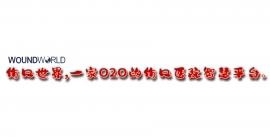
- 星期四, 30 3月 2023
Sex differences in body composition in people with prediabetes and type 2 diabetes as compared with people with normal glucose metabolism: the Maastricht Study
Rianneke de Ritter1,2 ● Simone J. S. Sep1,2,3 & Marleen M. J. van Greevenbroek1,2 & Yvo H. A. M. Kusters1,2 & Rimke C. Vos4,5 ● Michiel L. Bots4 ● M. Eline Kooi2,6 ● Pieter C. Dagnelie1,2 ● Simone J. P. M. Eussen2,7,8 ● Miranda T. Schram1,2,9,10 ● Annemarie Koster8,11 ● Martijn C. G. Brouwers 1,2 ● Niels M. R. van der Sangen12 ● Sanne A. E. Peters4,13 ● Carla J. H. van der Kallen1,2 ● Coen D. A. Stehouwer1,2
Received: 27 May 2022 / Accepted: 22 November 2022 / Published online: 20 February 2023 © The Author(s) 2023
Abstract
Aims/hypothesis Obesity is a major risk factor for type 2 diabetes. However, body composition differs between women and men. In this study we investigate the association between diabetes status and body composition and whether this association is moderated by sex.
Methods In a population-based cohort study (n=7639; age 40–75 years, 50% women, 25% type 2 diabetes), we estimated the sex-specific associations, and differences therein, of prediabetes (i.e. impaired fasting glucose and/or impaired glucose tolerance) and type 2 diabetes (reference: normal glucose metabolism [NGM]) with dual-energy x-ray absorptiometry (DEXA)- and MRIderived measures of body composition and with hip circumference. Sex differences were analysed using adjusted regression models with interaction terms of sex-by-diabetes status.
Results Compared with their NGM counterparts, both women and men with prediabetes and type 2 diabetes had more fat and lean mass and a greater hip circumference. The differences in subcutaneous adipose tissue, hip circumference and total and peripheral lean mass between type 2 diabetes and NGM were greater in women than men (women minus men [W–M] mean difference [95% CI]: 15.0 cm2 [1.5, 28.5], 3.2 cm [2.2, 4.1], 690 g [8, 1372] and 443 g [142, 744], respectively). The difference in visceral adipose tissue between type 2 diabetes and NGM was greater in men than women (W–M mean difference [95% CI]: −14.8 cm2 [−26.4, −3.1]). There was no sex difference in the percentage of liver fat between type 2 diabetes and NGM. The differences in measures of body composition between prediabetes and NGM were generally in the same direction, but were not significantly different between women and men.
Conclusions/interpretation This study indicates that there are sex differences in body composition associated with type 2 diabetes. The pathophysiological significance of these sex-associated differences requires further study.
Rianneke de Ritter
该Email地址已收到反垃圾邮件插件保护。要显示它您需要在浏览器中启用JavaScript。
1 Department of Internal Medicine, Maastricht University Medical Center+, Maastricht, the Netherlands
2 CARIM School for Cardiovascular Diseases, Maastricht University, Maastricht, the Netherlands
3 Adelante, Center of Expertise in Rehabilitation and Audiology, Hoensbroek, the Netherlands
4 Julius Center for Health Sciences and Primary Care, University Medical Center Utrecht, Utrecht University, Utrecht, the Netherlands
5 Leiden University Medical Center, Department of Public Health and Primary Care/LUMC-Campus, The Hague, the Netherlands
6 Department of Radiology and Nuclear Medicine, Maastricht University Medical Center+, Maastricht, the Netherlands
7 Department of Epidemiology, Maastricht University, Maastricht, the Netherlands
8 CAPHRI Care and Public Health Research Institute, Maastricht University, Maastricht, the Netherlands
9 Heart and Vascular Center, Maastricht University Medical Center+, Maastricht, the Netherlands
10 MHeNs School for Mental Health and Neuroscience, Maastricht University Medical Center+, Maastricht, the Netherlands
11 Department of Social Medicine, Maastricht University, Maastricht, the Netherlands
12 Department of Cardiology, Amsterdam UMC, University of Amsterdam, Amsterdam, the Netherlands
13 The George Institute for Global Health, Imperial College London, London, UK
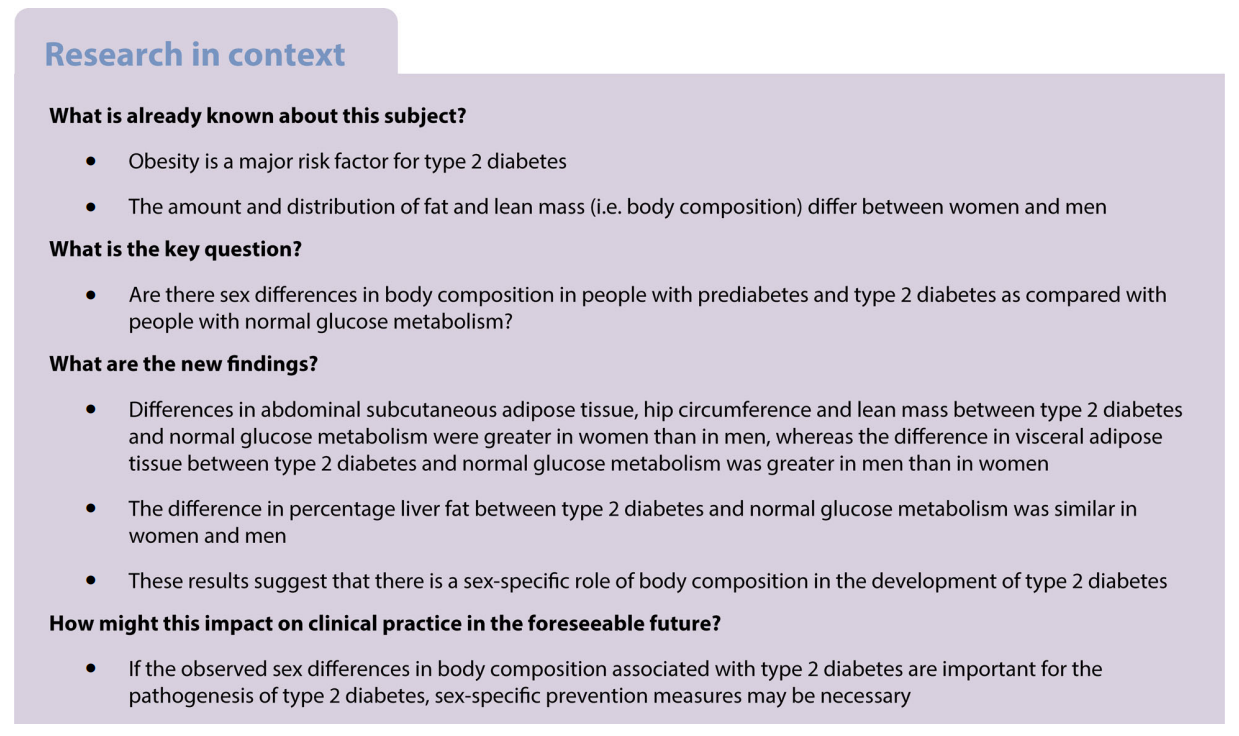
Keywords Body composition . DEXA . Fat mass . Lean mass . Liver fat . MRI . Prediabetes . Sex differences . Type 2 diabetes . Women
Abbreviations
DEXA Dual-energy x-ray absorptiometry
GMR Geometric mean ratio
GMS Glucose metabolism status
NGM Normal glucose metabolism
SAT Subcutaneous adipose tissue
VAT Visceral adipose tissue
W–M Women minus men

- 星期三, 29 3月 2023
Long-term cost-effectiveness of implementing a lifestyle intervention during pregnancy to reduce the incidence of gestational diabetes and type 2 diabetes
Melanie Lloyd1,2 iD Jedidiah Morton1,2,3 ● Helena Teede2 ● Clara Marquina1 ● Dina Abushanab1 ● Dianna J. Magliano2,3 ● Emily J. Callander2 ● Zanfina Ademi1,2
Received: 25 August 2022 /Accepted: 31 January 2023 © The Author(s) 2023
Abstract
Aims/hypothesis The aim of this study was to determine the long-term cost-effectiveness and return on investment of implementing a structured lifestyle intervention to reduce excessive gestational weight gain and associated incidence of gestational diabetes mellitus (GDM) and type 2 diabetes mellitus.
Methods A decision-analytic Markov model was used to compare the health and cost-effectiveness outcomes for (1) a structured lifestyle intervention during pregnancy to prevent GDM and subsequent type 2 diabetes; and (2) current usual antenatal care. Life table modelling was used to capture type 2 diabetes morbidity, mortality and quality-adjusted life years over a lifetime horizon for all women giving birth in Australia. Costs incorporated both healthcare and societal perspectives. The intervention effect was derived from published meta-analyses. Deterministic and probabilistic sensitivity analyses were used to capture the impact of uncertainty in the model.
Results The model projected a 10% reduction in the number of women subsequently diagnosed with type 2 diabetes through implementation of the lifestyle intervention compared with current usual care. The total net incremental cost of intervention was approximately AU$70 million, and the cost savings from the reduction in costs of antenatal care for GDM, birth complications and type 2 diabetes management were approximately AU$85 million. The intervention was dominant (cost-saving) compared with usual care from a healthcare perspective, and returned AU$1.22 (95% CI 0.53, 2.13) per dollar invested. The results were robust to sensitivity analysis, and remained cost-saving or highly cost-effective in each of the scenarios explored.
Conclusions/interpretation This study demonstrates significant cost savings from implementation of a structured lifestyle intervention during pregnancy, due to a reduction in adverse health outcomes for women during both the perinatal period and over their lifetime.
Keywords Cost-effectiveness . Decision modelling . Dietary intervention . Epidemiology . Gestational diabetes mellitus . Life table modelling . Physical activity . Pregnancy . Type 2 diabetes mellitus
Zanfina Ademi
该Email地址已收到反垃圾邮件插件保护。要显示它您需要在浏览器中启用JavaScript。
1 Centre for Medicine Use and Safety, Faculty of Pharmacy and Pharmaceutical Sciences, Monash University, Melbourne, Australia
2 School of Public Health and Preventive Medicine, Monash University, Melbourne, Australia
3 Diabetes and Population Health, Baker Heart and Diabetes Institute, Melbourne, Australia
